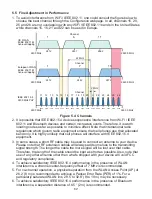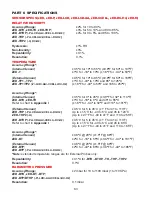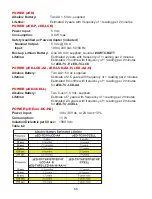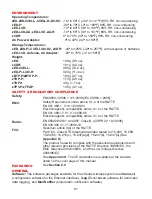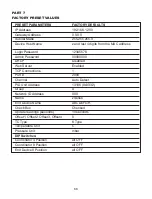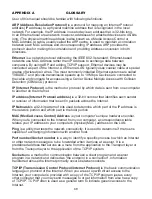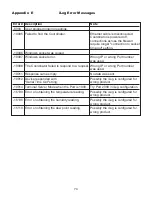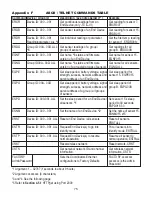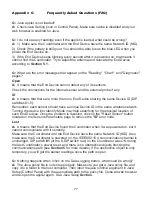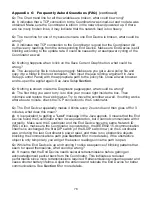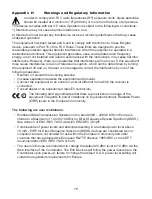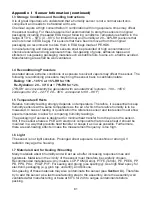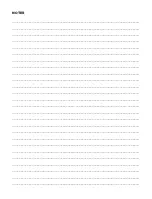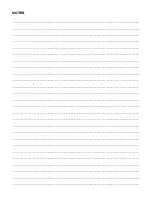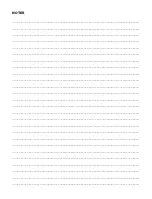
76
Appendix F ASCII /TELNET COMMANDS TABLE
(continued)
* An example of the status of an End Device
Command:
EQNG00A
Response:
7
EngrLAB 01000010 2.0
7
is the Device ID (DID) of the End Device.
EngrLAB
is the name for the End Device.
"
01000010
" is the bitmap representation of the internal state. The meaning for each bit is
described below (bit 7 starts from the left).
2.0
is version of the firmware in the End Device.
Based on the above information, End Device # 7 has not been communicating with the
Coordinator and its power is supplied by an adapter.
Reading/parameter for ERDR command
End Device Types
Options Reading/parameter
(lower case)
a
Sequence number
b
Device type
c
First temp / error message
d
First RH / barometric pressure
/ error message
e
Second temp / error message
f
Second RH / barometric
pressure / error message
i
Update rate
j
Battery voltage
k
Signal strength
l
Success rate
q
Name
r
Status
s
Firmware version
Bit 7
shows if the sensor is plugged
into the End Device. ‘1’ means there is
no sensing device detected.
Bit 6
shows if the communication to
the End Device is lost. ‘1’ means there
has not been any data received from
that particular End Device for 1 minute
or 4 times the update rate, whichever is
a longer time interval.
Bit 5
shows if there is more than one
End Device having the same dip switch
configuration. ‘1’ means more than 1
End Device has the same Network ID
and Device ID.
Bit 4
shows if there is any pending "identify
mode request" command for the End Device.
‘1’ means a "start" command is issued.
Bit 3
not used
Bit 2
shows if there is any pending "reset"
command for the End Device. ‘1’ means a
"reset" command is issued.
Bit 1
shows the source of power supply to
the End Device. ‘1’ means it’s powered by an
adapter and ‘0’ means it’s powered by
batteries.
Bit 0
shows the operation mode of the End
Device. ‘1’ means it is in identification mode
and ‘0’ means it is in normal operation mode.
ZED_T
1
ZED_BT_THP
11
ZED_T_BTP
2
ZED_BT_TP
12
ZED_T_THP
3
ZED_BTH
13
ZED_T_TP
4
ZED_BTP
14
ZED_TH
5
ZED_THP
15
ZED_TH_BTP
6
ZED_TP
16
ZED_TH_THP
7
ZED_TH_TP
8
ZED_BT
9
ZED_BT_BTP
10
ZED_TC
20

